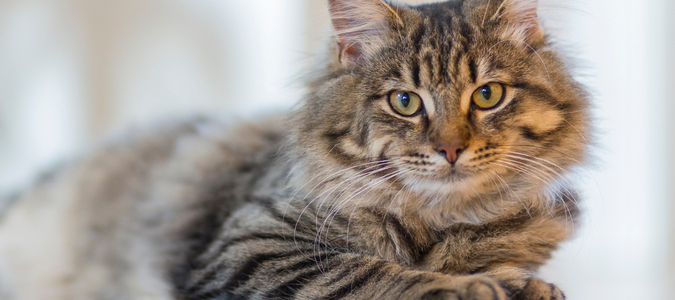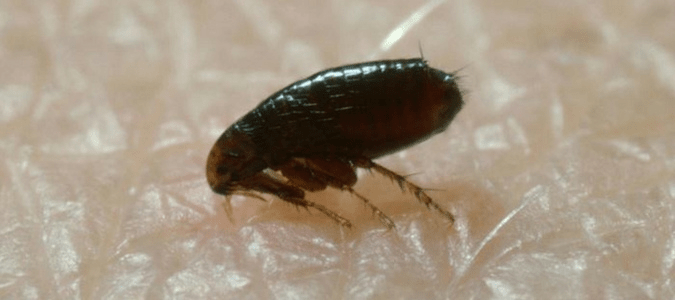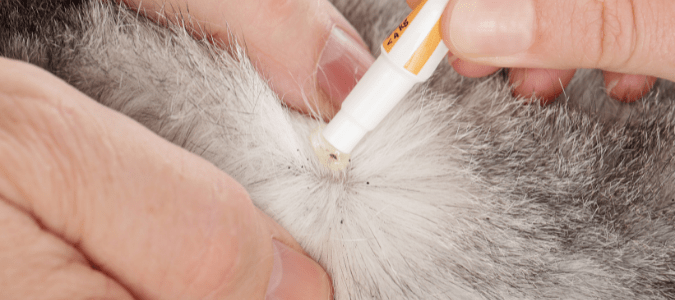My Cat Has Fleas: How Do I Clean My House?

No one wants pests in their home. However, if you have pets, especially cats, it is always possible that they will pick up fleas that can quickly spread throughout your space.
Your sweet little kitty can easily pick up the little pests on a trip outdoors or when they are around other animals. Their owners can bring them into the home on their clothing or shoes. Cats will scratch themselves with or without fleas. During their grooming, cats can ingest any adult fleas that might be present, making it difficult to be sure of an infestation.
Excessive itching, licking or biting at the skin is a sign of a flea problem in cats, even if you don’t see any of the little jumpy insects. You might be able to see them, however, as adult fleas are easily visible to the eye. Grown cat fleas are about one-eighth of an inch long and are brownish-black to black. They might look reddish black if they are full of blood after feeding.
Cat fleas are flattened toward the sides, wingless and have six legs. The back ones help them with their excellent jumping skills. The eggs of cat fleas are very small, about 1/64 of an inch, and are oval-shaped and white. Once they hitch a ride inside, fleas multiply quickly.
If you see fleas on your cat or suspect from their behavior that there is an infestation, those fleas are in your carpet, on your furniture and possibly dispersed throughout your home. You will want to contact a licensed pest control professional as soon as possible. They will be able to assess the problem and formulate an effective flea control plan for you and your family. They’ll also be able to help you determine whether one flea means an infestation.
Getting Rid of Fleas on Cats
You can find topical or spray products that will kill adult fleas and eggs that are already on your cat. You can even find some natural pet treatments, such as rosemary leaves soaked in hot water and then sprayed on your cat. Be sure never to use a product meant to kill fleas on dogs for a cat! Some dog products contain compounds that are lethal to cats.
Taking care of the fleas on the cat, however, likely won’t be enough on its own. You will also need to tackle the fleas inside of your home. A licensed pest control professional will have options for you to consider and can talk with you about the pros and cons of each.
Vacuum your floors and any and all upholstered furniture. This is a job for a heavy-duty vacuum cleaner, preferably one with a bag, so you don’t come into contact with these pests. If your cat likes to lounge near a specific piece of furniture or a certain spot on the floor, give that area some extra attention. Once you are finished, take the vacuum bag out, seal it in a trash bag and toss it in an outdoor garbage bin to prevent re-infection.
The next step is to steam clean the carpets and upholstery. Get into any cracks, crevices or trim on your couch and chairs. Extreme heat is dangerous for fleas and their eggs. Again, give an extra scrub to any spots where your pet likes to lounge.
Wash all bedding, especially the cat’s bed, with hot water and laundry soap. You might consider tossing the pet bedding altogether and getting something new to be extra careful.
Going to your vet for treatments for your cat and vigorously cleaning your home is a great start for controlling fleas, but you likely won’t be able to get them all. Talk to a pest control professional about the best approach to solve the problem and keep your family protected.
Preventing Fleas
Keeping fleas out of your home starts outside. Making your home less attractive to wildlife or rodents can be a helpful step in preventing fleas. This is because many of these wild animals carry fleas and ticks. When these creatures take up residence on your property, fleas can easily get to your pets. To make your yard less hospitable to unwanted wildlife, keep the lawn mowed and any shrubbery trimmed. In addition, don’t leave out any pet food or water bowls overnight, and clean up any fallen fruit in your garden. A pest control expert can point out places on your property that likely need attention in your battle against fleas.
Be sure you don’t overwater your lawn. Fleas and their eggs thrive in moist, warm environments.
Making your pet an unattractive prospective host for fleas is another good strategy. Take your cat to see the veterinarian regularly and ask them about flea prevention shots or medication for your cat. Modern formulations are very effective at warding off fleas, which means you and your family won’t have to worry about living with these disease-ridden insects. Fleas carry several bacterial illnesses. Additionally, one of the major threats posed by fleas to cats is tapeworms. Cats can get infected when they accidentally ingest an infected flea while grooming themselves.
If you suspect you have an issue, bathe your cat every couple of days and use a flea shampoo. After having your cat and home treated for a known infestation, this step will be very important in monitoring the effectiveness of treatments.
Also, use a flea comb on your cat to see if you dislodge anything. If you pull any fleas out of your pet’s hair, immediately dunk the fleas in a bowl of warm soapy water to drown them. In general, however, allow your cat to groom itself. That act keeps your cat’s skin healthy, so if you notice your pet isn’t grooming as usual, that is a sign of a problem.
Wash your pet’s bed and bedding every two days or so in hot water and laundry soap. Keep an eye out for anything moving that shouldn’t be there.

Flea Dirt But No Fleas on Cat?
Even if your cat has fleas, you might not see the adults if your cat is swallowing them during grooming. So how can you tell if there is a problem if you can’t see it? Look for flea dirt.
Flea dirt is the feces of adult fleas. You might notice black or reddish black specks on your cat’s behind or on their stomach. Check the areas where your cat often sleeps. You might see those specks there as well. You can perform a quick test to see if those dots are, in fact, flea dirt.
Flick some of the specks onto a white piece of paper and add a little water. If you see red, it’s flea dirt. That is because fleas feed off the blood of your pet. If you have flea dirt, your cat has adult fleas even if you can’t see them. Adult fleas make up only five percent of the total flea population in any infestation, so the scope of the problem is big.
Fleas can carry diseases that can be transmitted to other animals if they are bitten. Bring in a licensed pest control professional to quickly and efficiently get rid of fleas and get back to living a bug-free life.

Can Cats Get Fleas in the Winter?
Fleas are not fans of high heat, so using a steam cleaner on floors and furniture can help get them out of your house. They do, however, thrive in warm temperatures and especially in warm and moist environments. Right around 75 degrees is the sweet spot for fleas to increase their numbers.
So what about the cold? Many people believe that cats won’t get fleas when the mercury plummets. Though fleas won’t have the same numbers in winter as in summer, they can still threaten your cat and your family.
In some areas of the country, winter temperatures don’t drop very low, so the perfect environment continues year-round. If it does get chilly, artificial heat can be just as welcoming to fleas as outdoor heat. Additionally, in one stage of the flea life cycle, the pupal stage, fleas wrap themselves in a cocoon until they sense a host is nearby and it is warm enough. Fleas can stay wrapped in their cocoon for up to a year. So, even if flea activity slows down in the winter, there are still chances your flea problem could emerge again.
That means every precaution you take in the warmer months should continue through winter. Vacuum carpet and upholstered furnishings often, steam clean regularly and regularly wash all bedding. Be sure to wash it all in hot water with laundry detergent. Continue to bathe your cat regularly and check them for fleas or flea dirt. Have a licensed pest control professional set up a flea control plan to treat your pest problem thoroughly.
Chem-free Can Eliminate Your Flea Problem
Dealing with a flea problem on your own can feel like an endless, draining chore. Instead of trying to take this job on yourself, contact Chem-free Organic Pest Control. We offer customized pest management solutions that put your family first, so you, your family and your pets can feel comfortable again.

